Bee BehaviourBubbling Bees Buzz Pollination Operculum lifting behaviour
Australian native bees are proficient pollinators and important pollinators of Australia’s unique flora. Native bees seek out flowers for pollen and nectar, not necessarily collecting both at the same time. In this process they transfer pollen to other flowers, facilitating the process of pollination. Whilst some species appear to not be plant specific, others will only visit certain plant genus/species.
A particular behaviour in certain native species of bees (which has been documented) are how the bee will lift and remove the operculum of the flower (in flowering plants, the operculum (also known as a calyptra), is the cap-like covering or “lid” of the flower or fruit that detaches at maturity).
The following series of images are of the species Meroglossa impressifrons penetrata, and photographed in the Southern Downs region in Queensland.
Many thanks to photographer and author Marc Newman for permission to reproduce the images and excerpts from his scientific paper, co-authored with Bernhard Jacobi, Operculum-lifting behaviour in the Eucalypt-visiting hylaeine bees Meroglossa impressifrons penetrata (SMITH, 1879) and Hylaeus (Hylaeorhiza) nubilosus (SMITH, 1853). Link to the document can be found under Footnote & References below.
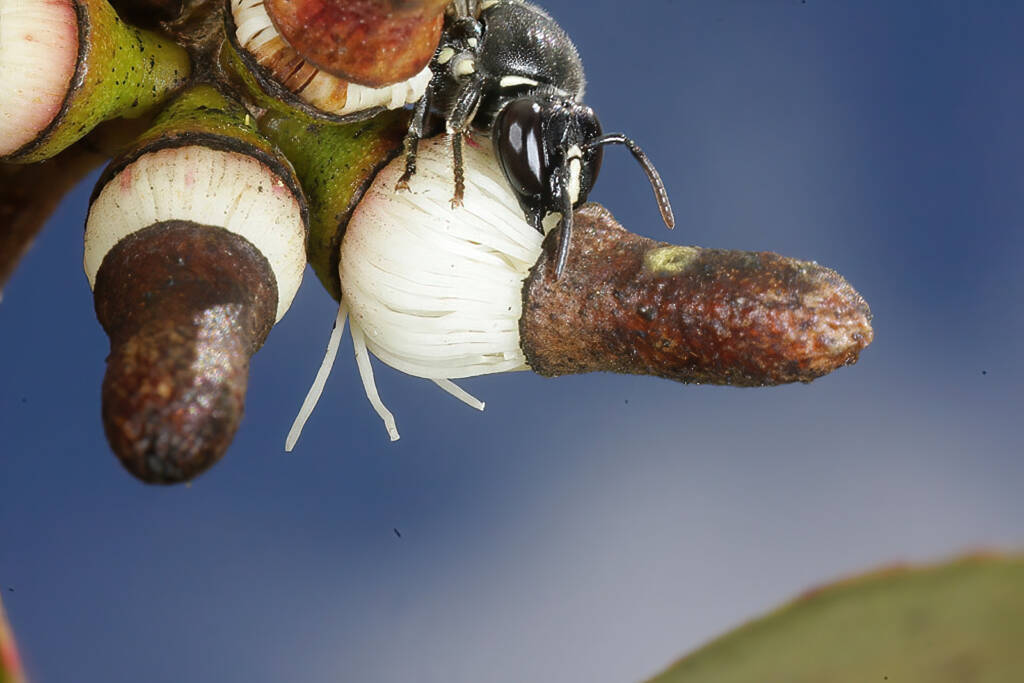
Observations
A small 2 meter mallee, Eucalyptus infera, flowering in early spring attracted numerous insects foraging for pollen and nectar and became a favoured location for observing and obtaining photos of native bees.A first observation (MN) involved Meroglossa impressifrons penetrata where a series of photos were taken showing that the bee systematically worked around the partly dehisced operculum of the Eucalyptus bud resulting in final removal and gaining access to the anthers of the flower. The behaviour was later seen again several times by both authors and again documented photographically.
The second species observed and photographed (BJ) uncapping ripe Eucalypt buds was Hylaeus (Hylaeorhiza) nubilosus. The technique applied was exactly the same as in Meroglossa. The mandibles were inserted under the rim of the operculum, the bee clinging to the free portion of the bunch of anthers with all legs and wedging the lower part of her head (mandibles and part of clypeus) between anther filaments and lower rim of operculum. The friction between the still compressed partially wavy filaments and the inner surface of the operculum seems to be comparatively strong, as the bee has to repeat the action several times from different positions around the circumference of the bud until the operculum slowly gives way and starts slipping upward. The bee follows and with a last push the operculum is shed. The bee immediately starts harvesting the pollen with the front tarsal brushes and the short, broad and medially emarginated tongue.
bembiX 32 (2011), Operculum-lifting behaviour in the Eucalypt-visiting hylaeine bees Meroglossa impressifrons penetrata (SMITH, 1879) and Hylaeus (Hylaeorhiza) nubilosus (SMITH, 1853), Authors Marc Newman (MN) & Bernhard Jacobi (BJ)
In the following photographs by Marc Newman, he has documented the Meroglossa impressifrons penetrata female on the flower of a Eucalyptus infera, removing the operculum from a partially dehised bud.
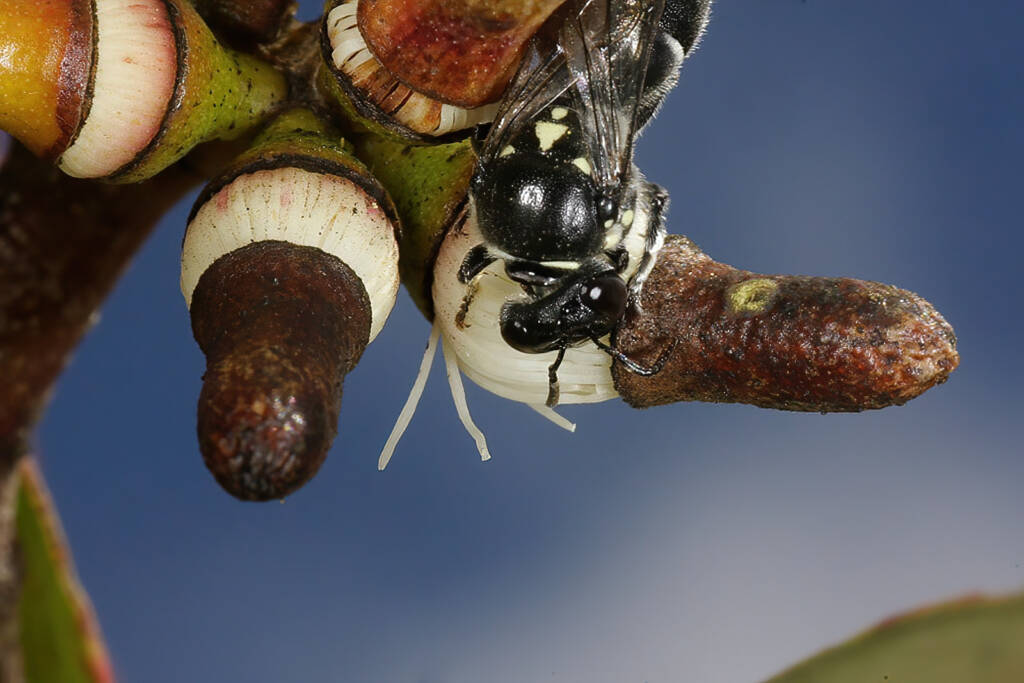
Here she is starting to lift the operculum on a partly dehisced Eucaluptus infera bud. Note the mandibles under the rim of the operculum.
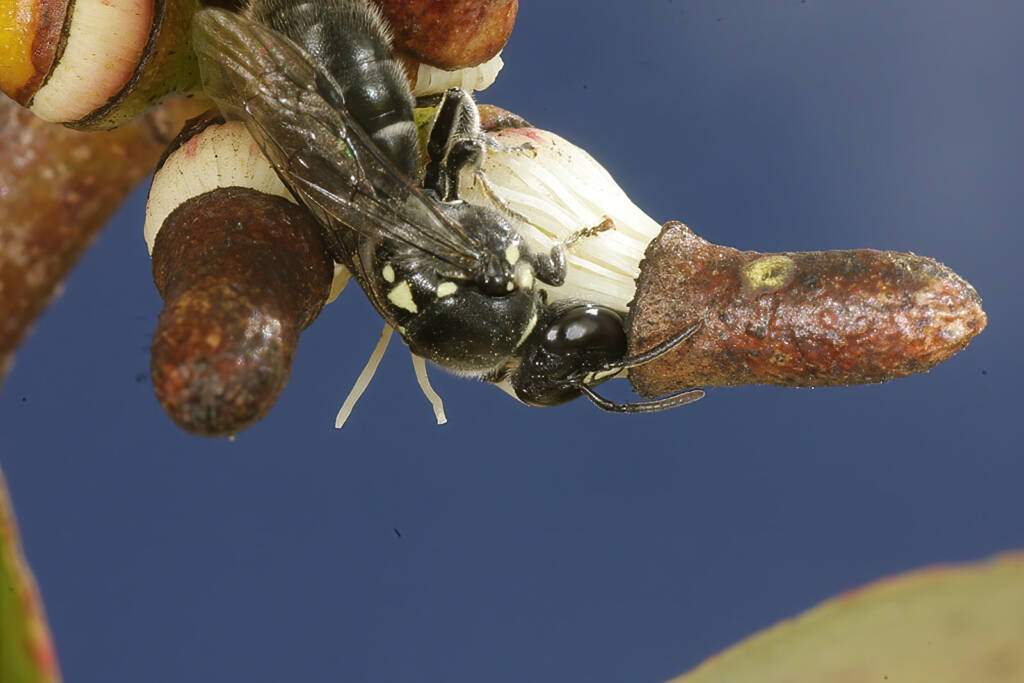
She has moved around the bud.
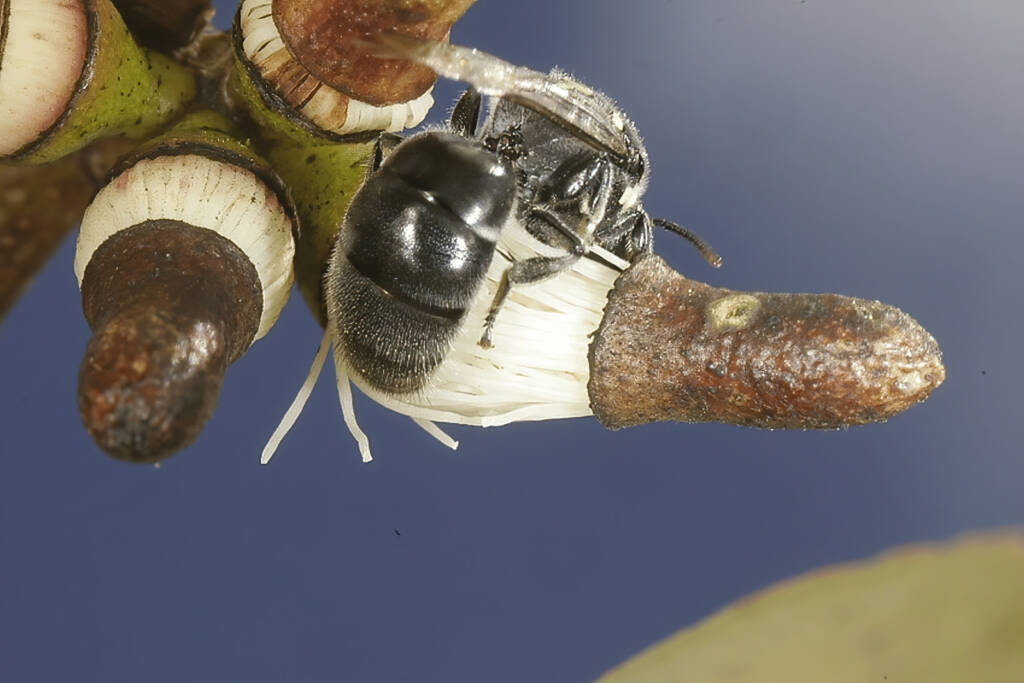
It’s working, the operculum is moving.
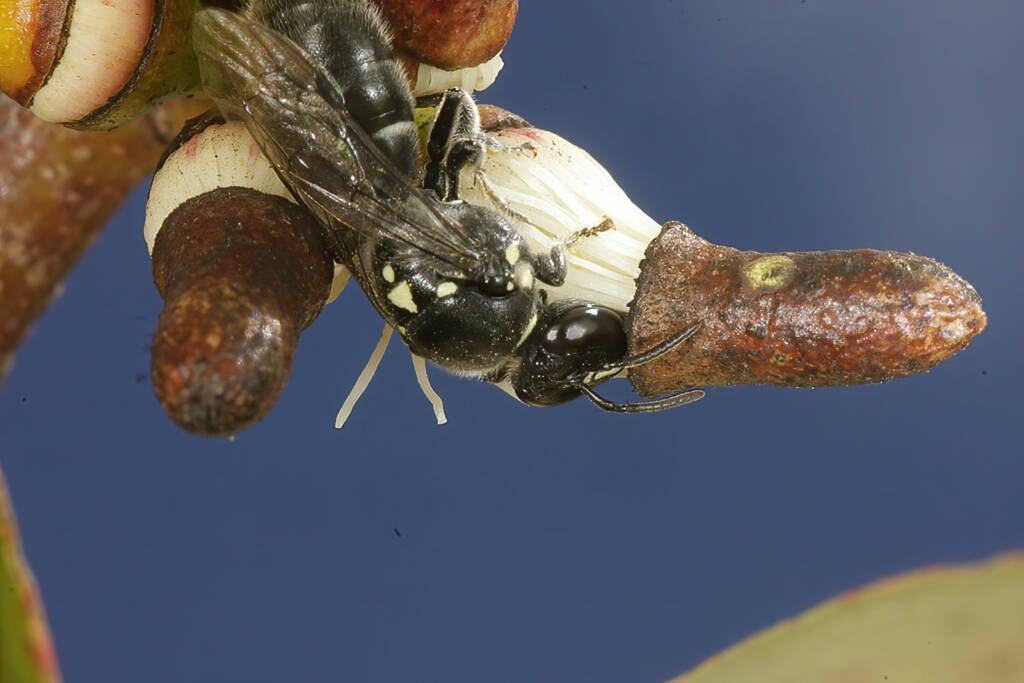
Over to the other side again…
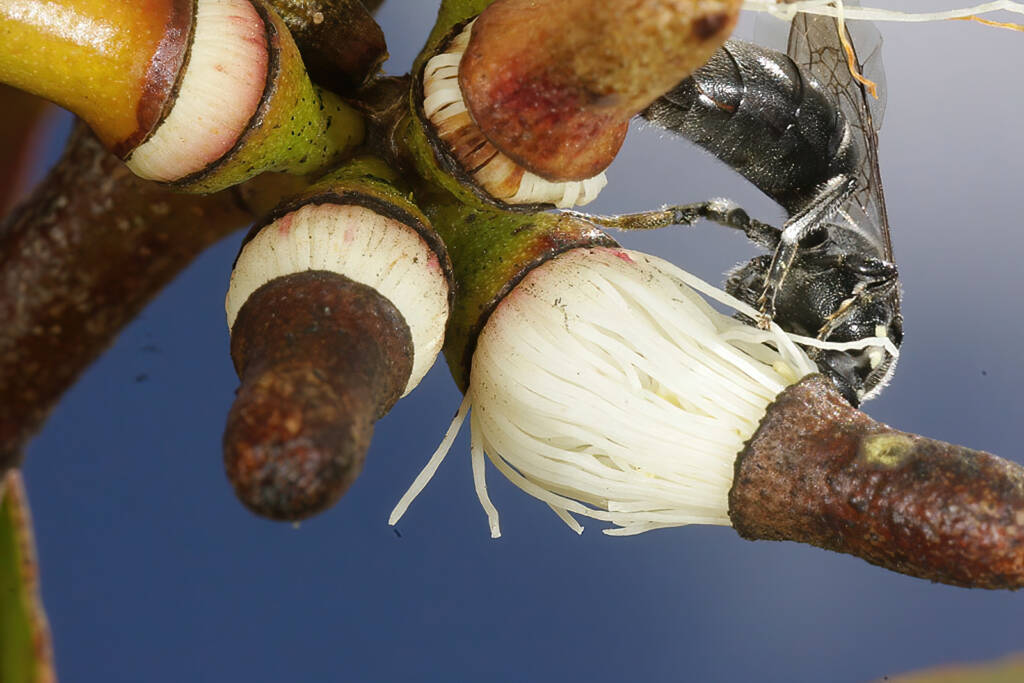
Success! It worked! She is into the pollen. But how did she know the pollen was available?
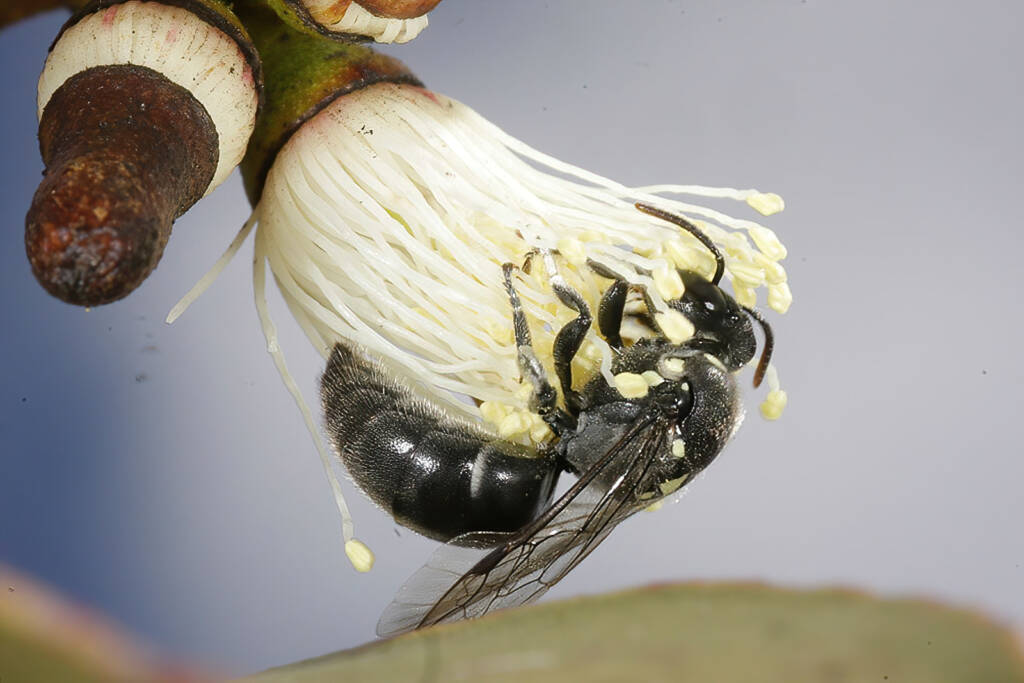
I have wondered how did she know the pollen was available?
I had initially bashed the partly dehisced bud on a black card to reveal pollen, but subsequent tests revealed that some buds were not yet releasing pollen, which led to the question how does the bee know if the pollen was available, if not a waste of effort.
My thoughts are that she was able to detect it somehow as some of the partly dehisced buds did not have pollen available from the anthers.
There was no hiding the pollen from this little girl…
Another Female species Hylaeus (Hylaeorhiza) nubilosus pushing off the operculum of a Eucalyptus infera flower.
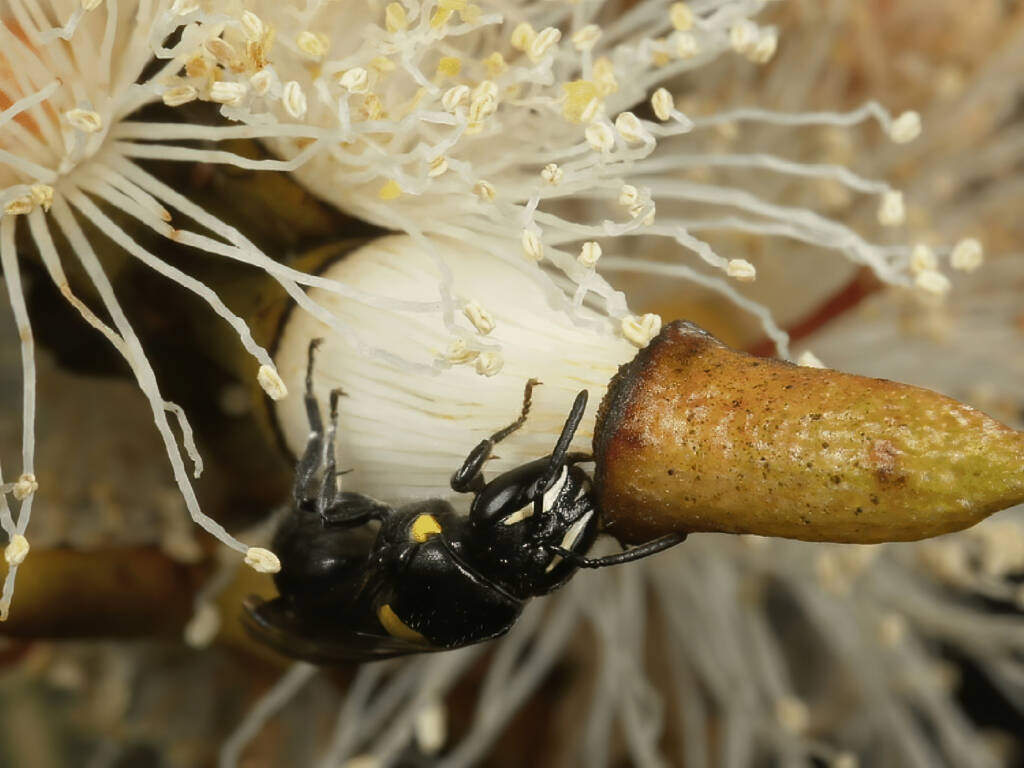
Female Hylaeus (Hylaeorhiza) nubilosus ingesting pollen, having removed the operculum of a Eucalyptus infera flower.
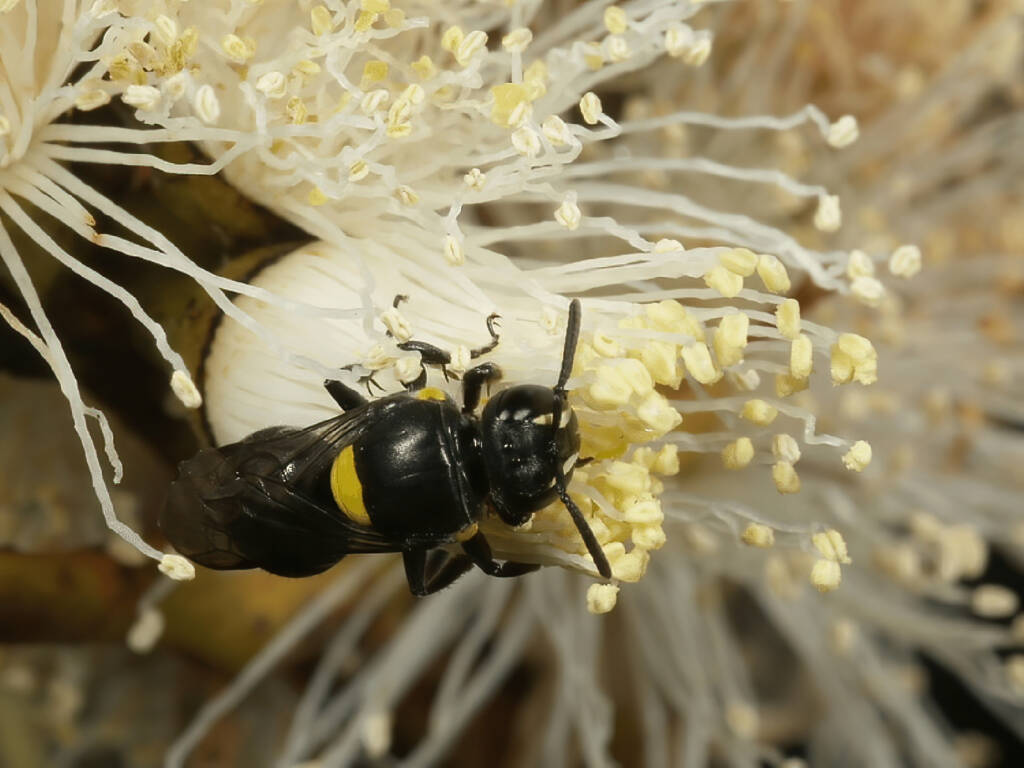
Following is the female Lasioglossum (Parasphecodes) hiltacum working an incompletely dehisced flower of Eucalyptus infera. The operculum of the flower has now been shed.
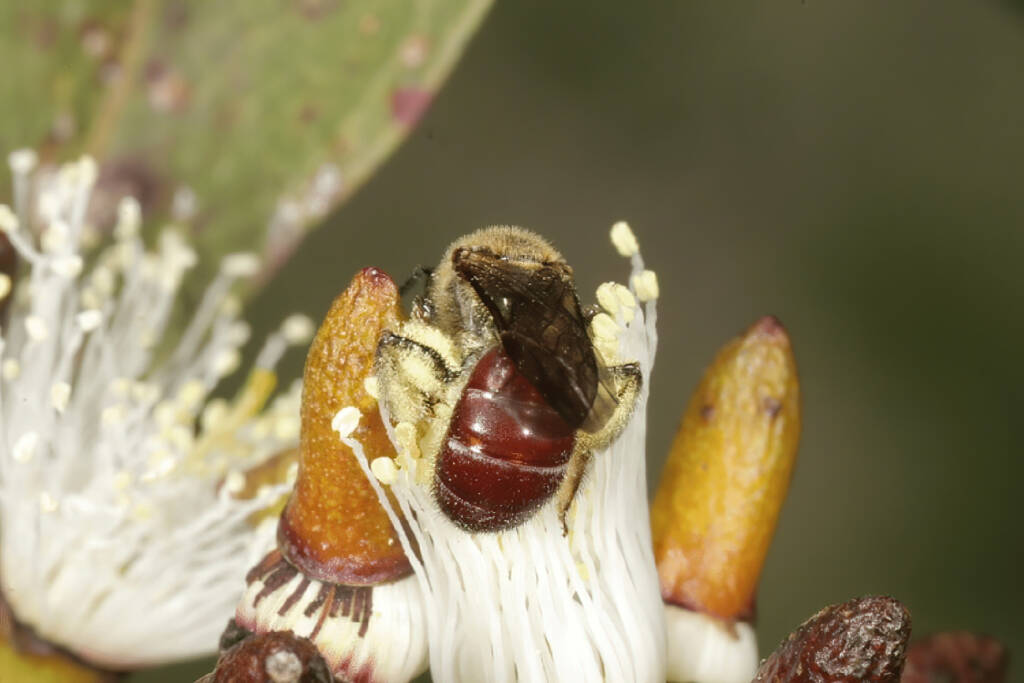
Footnote & References
- Photographs Meroglossa impressifrons penetrata female on Eucalyptus infera © Marc Newman, Flickr, https://flickr.com/photos/koolbee/albums
- Newman, Marc & Jacobi, Bernhard. (2011). Operculum-lifting behaviour in the Eucalypt-visiting hylaeine bees Meroglossa impressifrons penetrata (SMITH, 1879) and Hylaeus (Hylaeorhiza) nubilosus (SMITH, 1853). Bembix. 5 – 12. , https://www.researchgate.net/publication/305653125_Operculum-lifting_behaviour_in_the_Eucalypt-visiting_hylaeine_bees_Meroglossa_impressifrons_penetrata_SMITH_1879_and_Hylaeus_Hylaeorhiza_nubilosus_SMITH_1853
Bee BehaviourBubbling Bees Buzz Pollination Operculum lifting behaviour
BeesBees Anatomy Bee Behaviour Blogging Bees… Bees – image index Amegilla Bee Apis mellifera Austroplebeia australis Austrothurgus Braunsapis sp Ceylalictus perditellus Colletidae Euryglossinae Exoneura Homalictus Hyleoides bivulnerata Lasioglossum Lasioglossum (Chilalictus) Lipotriches Megachile Meroglossa Stenotritidae Tetragonula Thyreus Xylocopa
